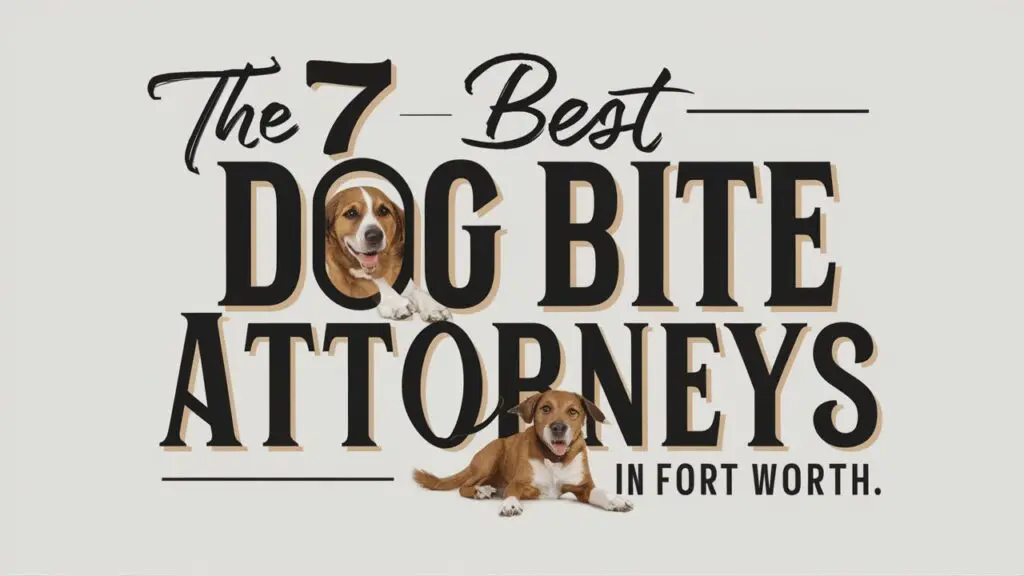Everything You Need to Know About Uvulas in Dogs: Do Dogs Have Uvulas?
When it comes to the anatomy of dogs, a common question is, “Do dogs have uvulas?” Unlike humans, dogs don’t have a palatine uvula, that piece of tissue that hangs at the back of the mouth. In human anatomy, the uvula plays a crucial role in speech and helps to prevent food and liquid from entering the larynx. While some animals have structures like a uvula, especially some breeds of dogs that might appear to have something similar, upon closer inspection, it’s clear that what might seem like a uvula is part of their tonsils or other throat tissues.
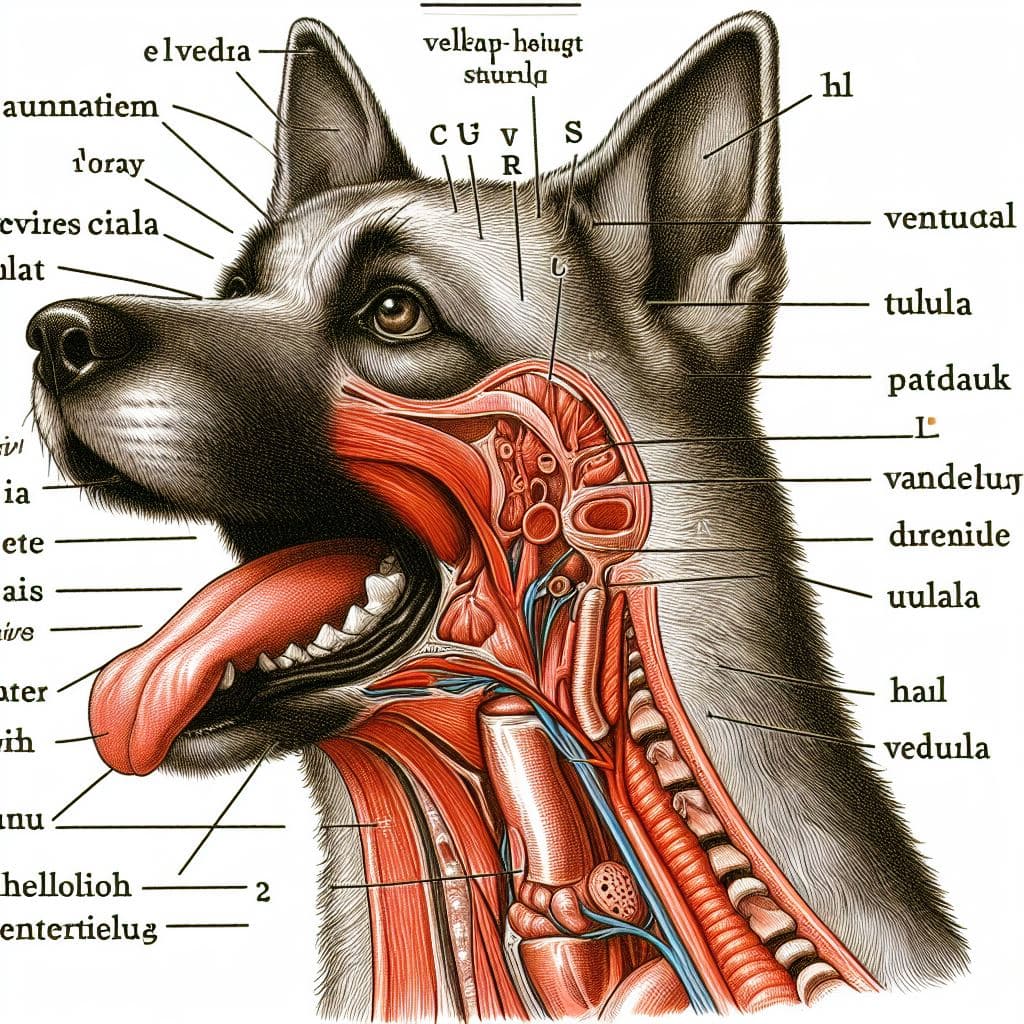
Dogs do not need a uvula because they have different mechanisms to direct food and ensure it doesn’t enter the respiratory tract. Also, since dogs communicate and convey information to other dogs largely through body language and a remarkable sense of smell, they do not require a uvula’s assistance for speech like humans do. While you may not see a uvula in your dog’s throat, rest assured they are perfectly adapted to their needs, using their highly efficient gag reflex to deal with unwanted food and liquid that may pose a choking hazard. The uvula in human anatomy, a tiny yet significant piece of tissue located at the roof of the mouth near the palate in the back, is a feature found in humans but not deemed necessary for dogs in their eating or communication habits.
Introduction to the Uvula and Its Functions
The uvula is a tiny, fleshy structure dangling at the back of the throat, often described as uvula is a little bell or grape. In humans, this function of a uvula spans from assisting in speech and making certain sounds in human languages to initiating the gag reflex. Scientists believe that the uvula might even play a role in the immune system, marking it as an accessory organ rather than a critical one.

On the other hand, when it comes to our canine friends, the question “Do dogs have uvulas?” reveals a clear distinction. Dogs don’t have uvulas, and for them, this absence reveals that dogs do not require this organ for their daily functions. While dogs have a gag reflex, it is not triggered by a uvula since they don’t need uvulas for the activities they perform or for their mode of communication. This difference illustrates that the uvula has evolved specifically for certain roles in humans that dogs, and indeed most other animals that have uvula-related functions, do not share.
What is a Uvula?
The small, fleshy extension at the back of the human throat is known as the uvula. Often queried with “Do dogs have uvulas?” the answer lies in biological differences. Unlike humans, dogs do not possess a uvula in their throats. This sparks the discussion on why dogs don’t have them while humans and dogs share many similarities. The human uvula is considered an accessory organ, contributing to speech and swallowing, whereas dogs have adapted without needing one.
While some animals have uvula, not all species exhibit this feature. It’s interesting to note, however, that no dogs may expect to see a uvula among their kind, as their evolutionary path has rendered it unnecessary. Unlike humans, dogs rely heavily on other physiological adaptations for their survival. Dogs can produce a wide range of sounds and have efficient swallowing mechanisms despite the absence of a uvula. Thus, while the question “Do dogs have uvulas?” can intrigue many, the simple answer is that through evolution, dogs are born and thrive without uvulas.
Role of the Uvula in Dogs
Like humans, people often wonder, “Do dogs have uvulas?” However, unlike humans, dogs do not need uvulas for their vocal functions. The uvula is uniquely human and is considered an accessory organ. While dogs and humans share many anatomical features, dogs lack a uvula. These differences highlight how uvulas are unique to humans, and the majority of animals, including dogs, have evolved without them.
In discussions on the topic, it might be asked, “Why don’t dogs have them?” Essentially, the uvula plays a role in articulating the complex sounds that humans make when they communicate with humans. Since dogs rely on a different set of sounds to communicate, the development of a uvula was not necessary for them. Therefore, species have a uvula largely due to differing evolutionary paths. Dogs also communicate effectively without needing a uvula, showcasing that the uvula is an accessory organ rather than a medically essential one.
Function of the Uvula in Speech and Swallowing
The uvula, a small, fleshy appendage dangling at the back of the throat, plays a crucial role in speech and swallowing. Contrary to common curiosity, “Do dogs have uvulas?” the answer is no; dogs have a uvula is a misconception since dogs are renowned for their excellent senses but lack this anatomical feature. In humans, the uvula is present and varies in shape, with some individuals even having two-pronged uvulas. It is essential for articulating certain sounds and for preventing food from entering the nasal pathway during swallowing. The uvula also helps in triggering the gag reflex, aiding in ejecting unwanted particles.
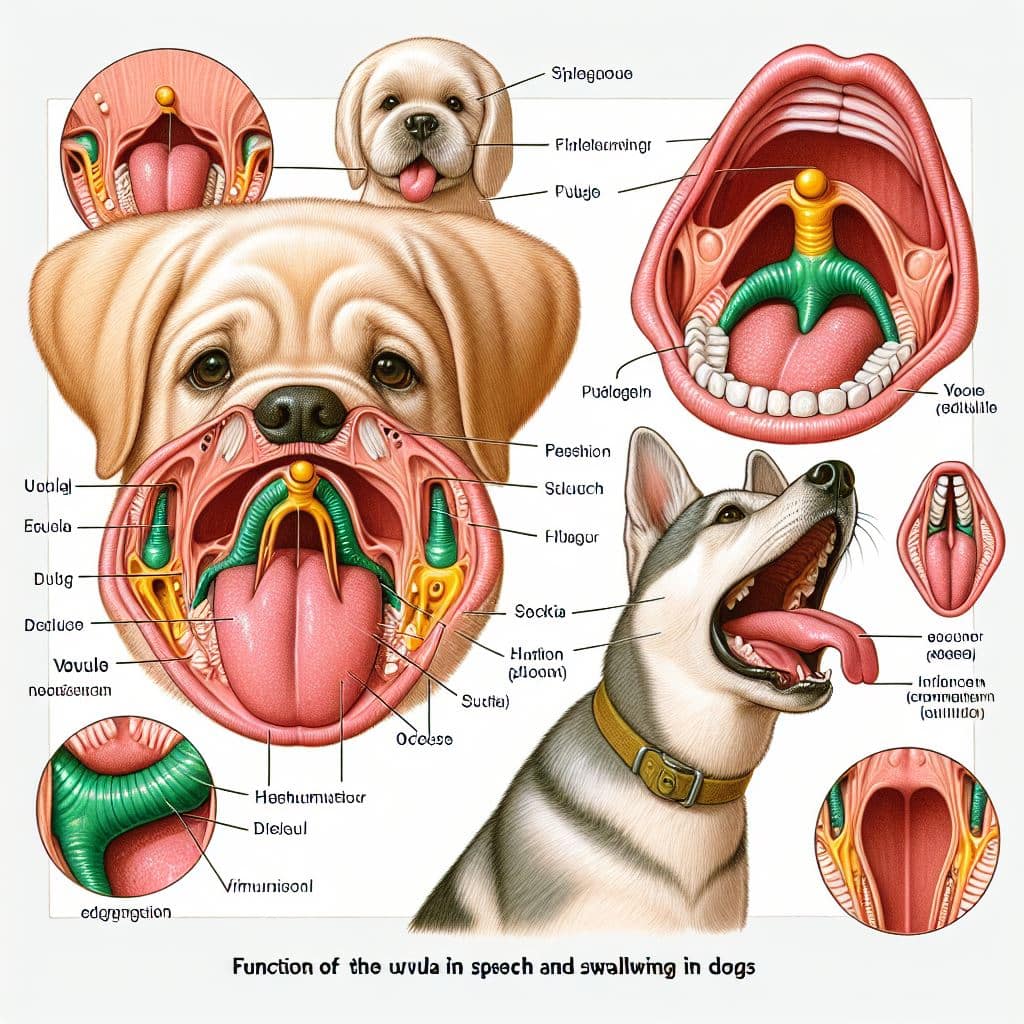
While the uvula is not a medically critical organ, issues can arise. People with underdeveloped uvulas or those who have had their uvulas removed may experience challenges in speech and swallowing. Despite these potential issues, the uvula’s functions are shared with other structures in humans and other animals, which might prompt the curious question, “Do dogs have uvulas?” Though the answer remains no, the comparison highlights the fascinating diversity of anatomy among different species. To find everything you need about the uvula’s impact, one must delve into the interconnected functions it shares with other parts of the mouth and throat, showing its significance beyond being a mere piece of flesh.
Do Dogs Have Uvulas?
When people ask, “Do dogs have uvulas,” they’re curious about whether canines share this human anatomical feature. The structure in question, called the uvula, is found in humans, hanging at the back of the throat. Interestingly, dogs do not have uvulas due to differences in anatomy and evolutionary paths between humans and canines.
Comparing Soft Palates: Dogs vs. Humans
When it comes to comparing the soft palates of dogs that have different anatomical features than humans, one notable difference is the presence of the uvula. Humans have a uvula dangling at the back of their throat, an important part of our anatomy that aids in speech and swallowing. However, when the question arises, “Do dogs have uvulas?” the answer is no. Dogs do not have this fleshy projection, which is a unique characteristic distinguishing their soft palate from that of humans.
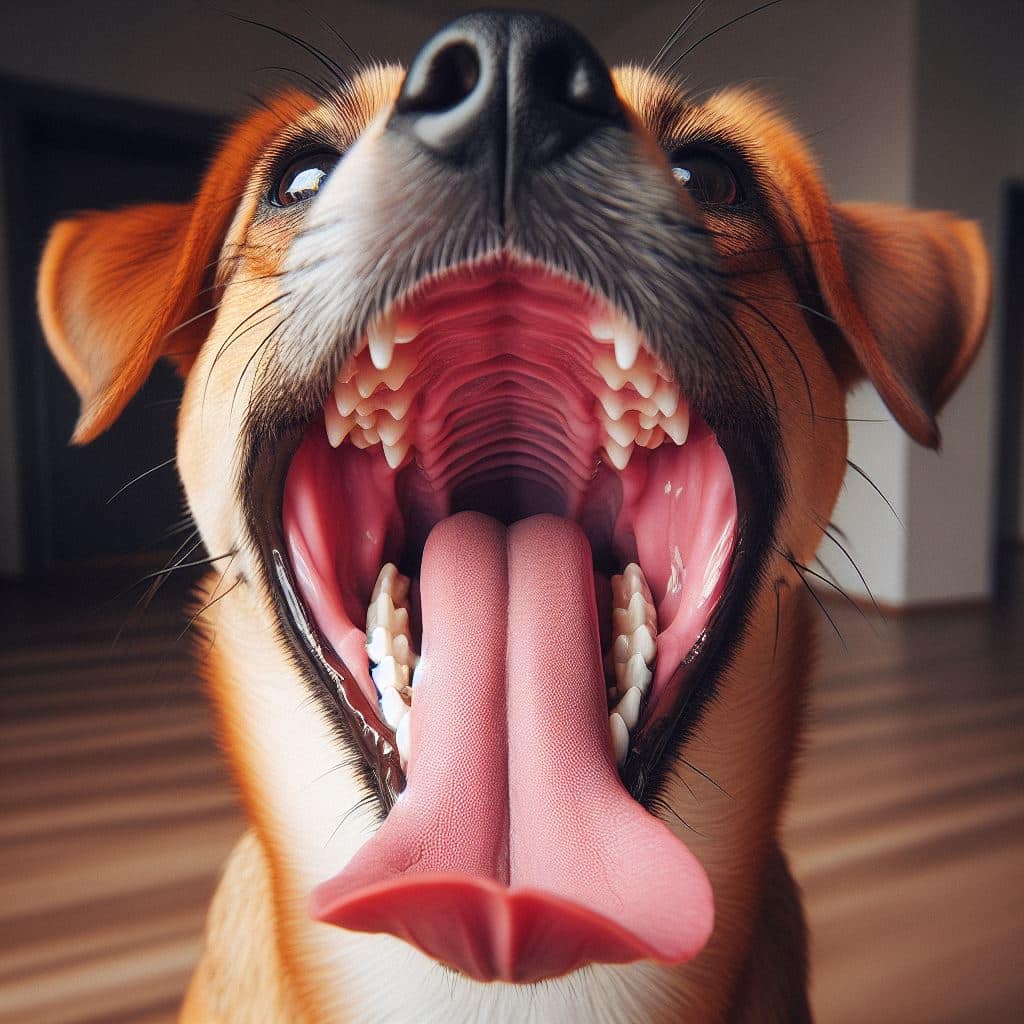
Anatomy of Dogs: Is There a Uvula?
When considering the anatomy of canines, one might wonder, “Do dogs have all the same throat structures as humans?” Specifically, the question of whether dogs have uvulas comes up frequently among pet owners and animal enthusiasts. Unlike humans, dogs do not have a uvula. This small, fleshy projection that hangs from the soft palate is absent in dogs. Their throat structure is designed differently, serving their needs without requiring a uvula.
Reasons Why Dogs Do Not Have Uvulas
One common question pet owners have is, do dogs have uvulas? The simple answer is no, dogs do not have uvulas. The reason behind this lies in their evolutionary biology. Unlike humans, dogs have evolved in a way that doesn’t require the presence of a uvula.
The uvula, primarily found in humans, plays a role in speech and the management of saliva. Since dogs communicate differently and do not rely on verbal language, the uvula’s absence in their anatomy does not hinder their ability to communicate. Thus, when considering do dogs need a uvula, the evolutionary and functional aspects of their biology indicate that they do not.
Understanding the Canine Soft Palate
The canine soft palate is a key anatomical feature within a dog’s oral cavity. Acting as a flexible partition, the soft palate separates the nasopharynx from the oropharynx. Its primary function is to close off the nasal passages during swallowing, preventing food and liquid from entering the nasal cavity. Understanding the structure and function of the soft palate is essential for diagnosing and treating various respiratory and feeding problems in dogs. Misalignments or elongations can lead to significant health issues, emphasizing the importance of this soft, muscular flap in canine health.
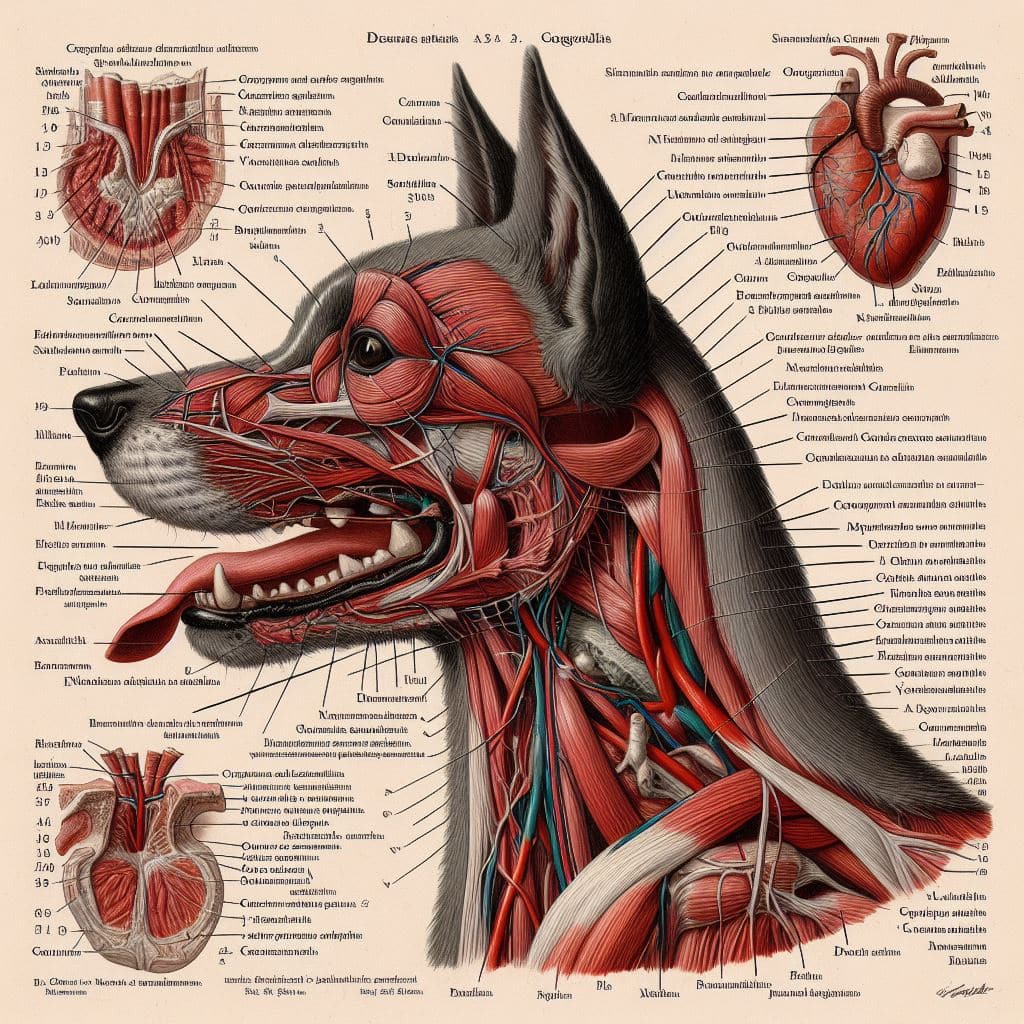
The Structure and Function of the Soft Palate in Dogs
The soft palate in dogs is a versatile and crucial anatomical feature that plays a significant role in their oral and respiratory health. Contrary to what some may wonder, do dogs not possess a structure exactly like the human uvula; the question of “do dogs have uvulas” often arises, but their soft palate concludes without this pendant-like tissue. The soft palate functions primarily to separate the nasal passages from the oral cavity, aiding in the processes of breathing and swallowing without interference.
How Dogs Swallow Without a Uvula
Many people wonder, do dogs have uvulas? Dogs do not have a uvula, the fleshy extension at the back of the human throat which assists in swallowing and speech. This absence raises another question: do dogs manage to swallow their food effectively without a uvula? Dogs have evolved with a differently structured throat and a strong, muscular esophagus that helps them swallow food and liquids efficiently, making a uvula unnecessary for their digestive process.
Gag Reflex in Dogs: Is It Related to the Uvula?
When discussing the gag reflex in canines, a common question arises: “Do dogs have a gag reflex similar to humans?” This is intrinsically linked to another query, “Do dogs have uvulas?” The answer provides clarity to both questions. Unlike humans, dogs do not have a uvula, the fleshy extension at the back of the throat known to play a role in the gag reflex for humans. Therefore, while dogs do exhibit a gag reflex, it is not related to the uvula, since they lack this anatomical feature altogether.
Differences in Uvular Anatomy Among Animals
In the vast and intricate world of animal anatomy, differences abound in the structure of the uvula, that small, fleshy appendage dangling at the back of the throat. This variation is particularly noticeable when comparing humans to other animals. A commonly asked question is, “Do dogs have uvulas?” The simple answer is no. Unlike humans, dogs, and indeed most animals, lack this peculiar organ. This absence raises intriguing questions about the uvula’s functional significance and evolutionary journey across different species.
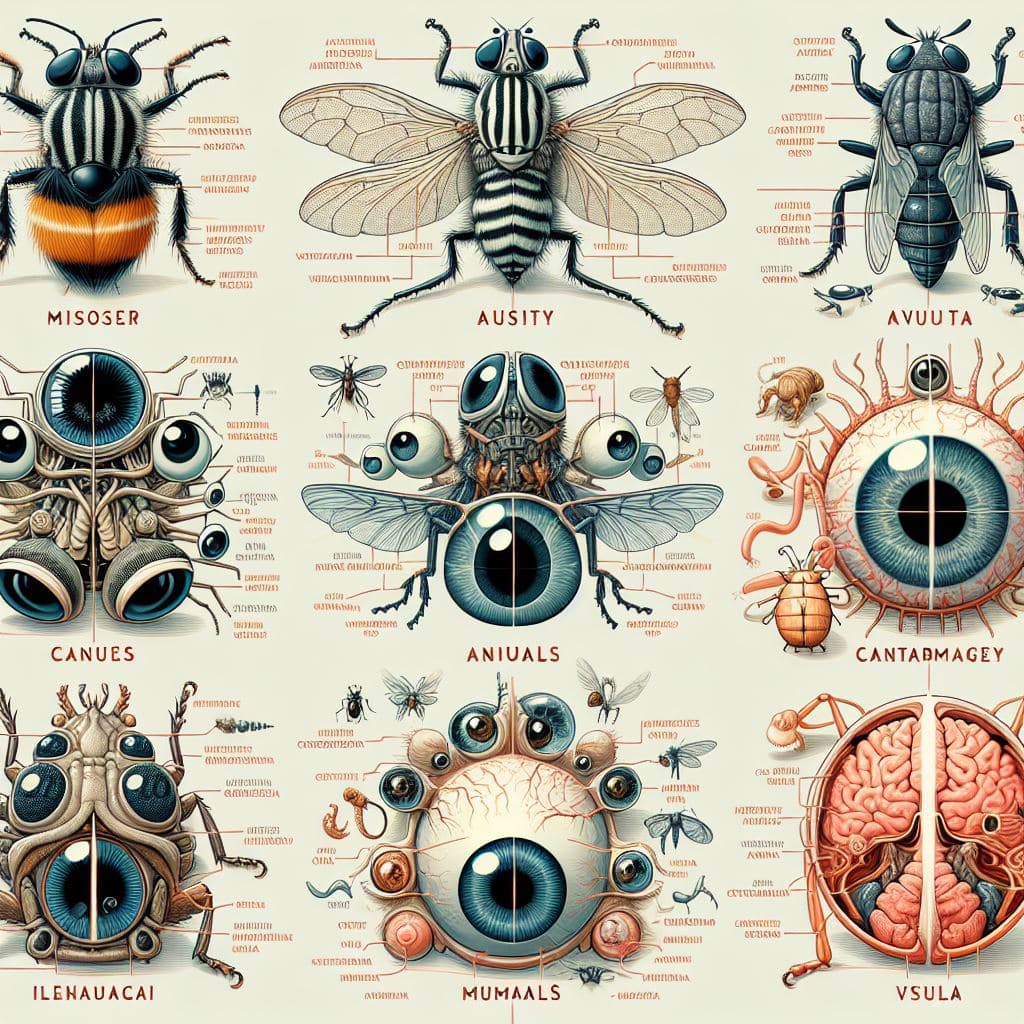
Which Animals Have Uvulas?
When wondering about the specifics of animal anatomy, a common question that arises is, “Do dogs have unique features similar to humans?” In particular, the subject of the uvula, a notable part of human throat anatomy, often comes into play. Interestingly, when asking, “Do dogs have uvulas,” the answer is no. Dogs, along with most other animals, do not possess a uvula. This fleshy extension at the back of the throat is uniquely human.
Unique Features of the New Guinea Singing Dog
The New Guinea Singing Dog is an enigma in the canine world, celebrated for its unique vocalizations. Unlike typical dog dogs, these canines can produce a variety of harmonious tones, captivating to anyone lucky enough to hear. An interesting query is whether these melodious creatures dogs have uvulas; indeed, like all dogs, they lack a uvula, yet this doesn’t impede their singing prowess. The structure of a dog’s mouth plays a significant role in its ability to create such distinct sounds, demonstrating the fascinating adaptability of this species.
Evolutionary Perspectives on the Uvula in Mammals
From an evolutionary perspective, the uvula, a small, fleshy extension at the back of the human throat, presents a curious case for scientists. When considering other mammals, the question of “Do dogs have uvulas” often arises. This points to an interesting divergence in anatomical evolution, illustrating that not all mammals share this feature. Specifically, do dogs and other canines lack this pendant-like structure, highlighting functional and evolutionary adaptations unique to certain species?
The Role of Uvulas in Communication and Eating
The uvula, often overlooked, plays a crucial role in human communication and eating. It assists in speech by contributing to the production of sounds and in swallowing by helping to prevent food from entering the nasal passage. This function underlines the importance of the uvula in our daily lives, ensuring that eating and speaking processes are carried out smoothly. Interestingly, people often wonder: do dogs have uvulas? The answer is no; do dogs not possess uvulas, which highlights a fascinating difference in anatomical structures between species.
How the Lack of a Uvula Affects Dogs’ Bark and Swallow
When pondering the question, “Do dogs have uvulas?” it’s essential to understand how its absence impacts their vocalizations and swallowing. Dogs, unlike humans, do not possess a uvula, which is that flesh dangling at the back of the human throat. This anatomical difference doesn’t hamper their ability to bark or swallow. The uvula in humans aids in speech articulation and prevents food from entering the nasal passage. Although dogs lack this structure, they have other anatomical adaptations that allow efficient swallowing and the production of their characteristic barks. Thus, the lack of a uvula in dogs does not negatively affect their essential functions.
Human vs. Dog: Communication and Saliva Control Without a Uvula

When it comes to communication and saliva control, humans and dogs have some distinct differences. A key anatomical distinction lies in the uvula, that small fleshy extension at the back of the human throat, which is absent in canines. This leads to the question, do dogs have uvulas? The simple answer is no. Do dogs then manage saliva and articulate sounds differently? Absolutely. Without a uvula, dogs rely on their larynx and a complex array of vocal cords to communicate, while saliva control is managed through other evolutionary adaptations unrelated to speech.
Conclusion:
Dogs do not have uvulas because they do not need them for their anatomy and physiology. The uvula is a human-specific organ that serves various functions, such as speech, swallowing, and immunity. However, dogs have other ways of performing these functions without the need for a uvula. Therefore, the uvula is an example of how different species have evolved differently to adapt to their environments and needs. While some animals may have structures that resemble a uvula, they are not the same as the human uvula and may have different roles. The uvula is a fascinating and unique part of the human body that distinguishes us from other animals, especially our canine companions.
FAQs:
What animals have uvulas?
Contrary to common belief, humans are not the only species with a uvula. Baboons display this feature as well. The function of the uvula in baboons, similar to humans, contributes to speech and the production of saliva. However, beyond humans and some primates, such as baboons, very few animals have a uvula.
Do dogs have uvulas?
When considering the anatomy of our canine friends, a common question arises: do dogs possess a certain anatomical feature found in humans? Specifically, do dogs have uvulas? Unlike humans, who have a uvula as part of their oral anatomy, dogs do not have this feature. The uvula, which plays a role in speech and swallowing in humans, is absent in dogs.
What happens if the uvula is removed?
The removal of the uvula, a procedure known as uvulectomy, can affect speech and swallowing. Some might wonder if all creatures, including canines, face such consequences. Interestingly, when pondering “do dogs have uvulas?”, it’s important to note that dogs do not possess uvulas in the same way humans do. For humans, without the uvula, there might be a risk of increased snoring and possible discomfort while swallowing, but these effects vary from person to person.
Is it bad that my uvula touches my tongue?
If you find that your uvula touches your tongue, it might feel peculiar, but it isn’t necessarily bad. It could be a temporary condition, like swelling due to an infection or allergies. Comparatively, do dogs experience similar issues? Interestingly, do dogs have uvulas? No, they don’t. This anatomy is unique to humans, playing a role in speech and swallowing.
What is the purpose of a uvula?
The uvula, a small fleshy extension at the back of the throat, plays several roles in human biology. It aids in speech and swallowing and is part of the body’s defense against microbes. While we have one, the question of “Do dogs have uvulas” arises. Interestingly, do dogs not possess a uvula in the same way humans do, which highlights differences in anatomical structures and functions between species.




